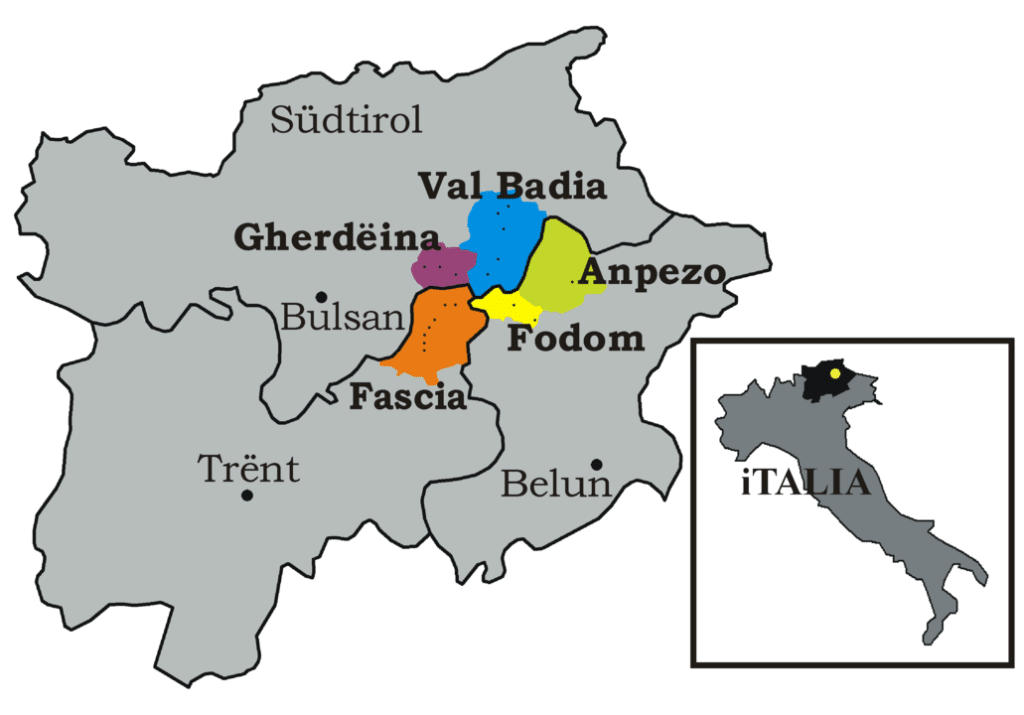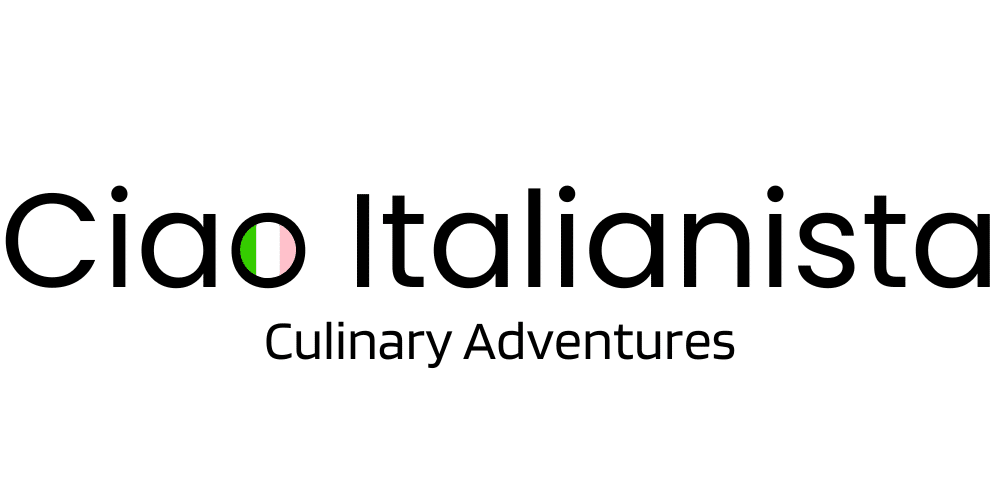Ciao Italianista contains affiliate links and is a member of the Amazon Services LLS Associates Program. If you make a purchase using one of these Amazon links, I may receive compensation at no extra charge to you. See my disclosure policy for more information.
Language and Culture of Selva Gardena
What is the real name of this town? That depends on who you ask. Selva Gardena has three names:
- Selva di Val Gardena in Italian
- Wolkenstein in Gröden in German
- Sëlva in Ladin.
Italian, German, and Ladin are also the three official languages of this area which is part of Ladinia.

What is Ladinia?
Ladinia is a nation without a state in Northern Italy. This area played an important role in the movement for Italy’s national unity. There has been much dispute over the borders with the Austrian government and the people here do not identify themselves with Italy or Austria, but with an area called Ladinia. Ladinia is an Alpine region divided between the Italian provinces of Belluno, South Tyrol, and Trento.

The Ladin people developed a national identity in the 1800s when their land became part of the Austrian empire and they underwent Germanization. During a Tyrolian rebellion in 1833 under the Napoleonic wars, their language was codified by a priest from Badia. In 1920, the Ladin people adopted a blue-white-green flag which symbolizes Ladinia’s forests, the snow-covered peaks, and the blue sky.
What is Ladin?
Ladin is a unique Italian dialect because it is actually another romance language that was once spoken all over Central Europe. It is called a Rhaetian-Romance language because the Rhaetian people who lived in the Dolomites before the Romans arrived, began to adopt vulgar Latin after they were integrated into the Roman Empire.
Their language then evolved into the Ladin language. For the last 1500 years, the territory where it was spoken has been shrinking until today there are only four Ladin language islands are left: Grisons (Switzerland), Dolomite-Ladinia, Comelico, and Friuli. Ladin also has similarities to Swiss Romansh and Friulian.
Although Italian, German, and Ladin are all official languages of Selva Gardena, 90% of the people speak Ladin as their first language, 6% German, and only 5% Italian. Sëlva comes from the Latin word silva and it means woods.

A good drop of wine,
Ladin inscription in A Hotel in Wengen La Val
makes the heart lighter,
but with measure,
says the scripture.
The people that live in Selva Gardena have a strong Ladin identity. The Ladin spoken language is very ancient but the written language only goes back to about 1700. For most of its history, the language and culture were passed down orally as grandparents and parents told their children myths and legends. See my travel article on Selva Gardena for some of these legends.
Today the Ladin language and culture are protected and fostered. Ladin is spoken daily in all of the valley around Sella including Selva Gardena, Livinallongo, Fassa, Val Badia, and Cortina. It is also spoken in Friuli and in Grigioni in Switzerland.
Ladin in these areas is now taught in schools. It is used in the Public Administration. The RAI transmits daily news in Ladin. There is a newspaper that comes out once a week in Ladin.
Now let’s learn some Ladin!
English
Hello
Good evening
Good night
How are you?
Good
Where are you going?
(to) home
Thank you
Bye; see you later
What is your name?
Let’s eat!
Italian
Buon giorno
Buona sera
Buona notte
Come stai?
Bene
Dove vai?
A casa
Grazie
Arrivederci
Come ti chiami?
Buon appetito!
Ladin
Bun dé, bëgnodü
Buna sëra
Buna nöt or bona nuet
Co vara pa? Co vala?
Bun
Ula vaste pa?
A ciasa
Giulan
A s’udëi
Co aste pa inom?
Bun prö!
Val Gardena Culture and Crafts
Every first Sunday in August, there is a folklore festival in Val Gardena. The people dress up in their traditional clothing and march down the street with music. Each year it is held in a different town in Val Gardena and in August 2021, it will be in Selva Gardena. Check out this video to see the beautiful traditional clothing:
Woodcarving in Selva Gardena
Until only about 100 years ago, Selva Gardena was very isolated and the people had to come up with something to do in the wintertime. They took up woodcarving and became master carvers. At the end of this short video, you will see the master artisans at work carving intricate handicrafts. The rest of the video shows the Tyrolean architecture and more of the amazing Alpine landscape.

A good pub,
Ladin inscription in the Gasthof Pidor in La Val
a good companion,
all search for a good time,
old and young.
On that note, let’s go look for a good pub and explore the culinary delights of Selva Gardena. Then come to my house to make a South Tyrolean meal a casa in my related article on South Tyrolean food. Bun prö and Benvignûz!


